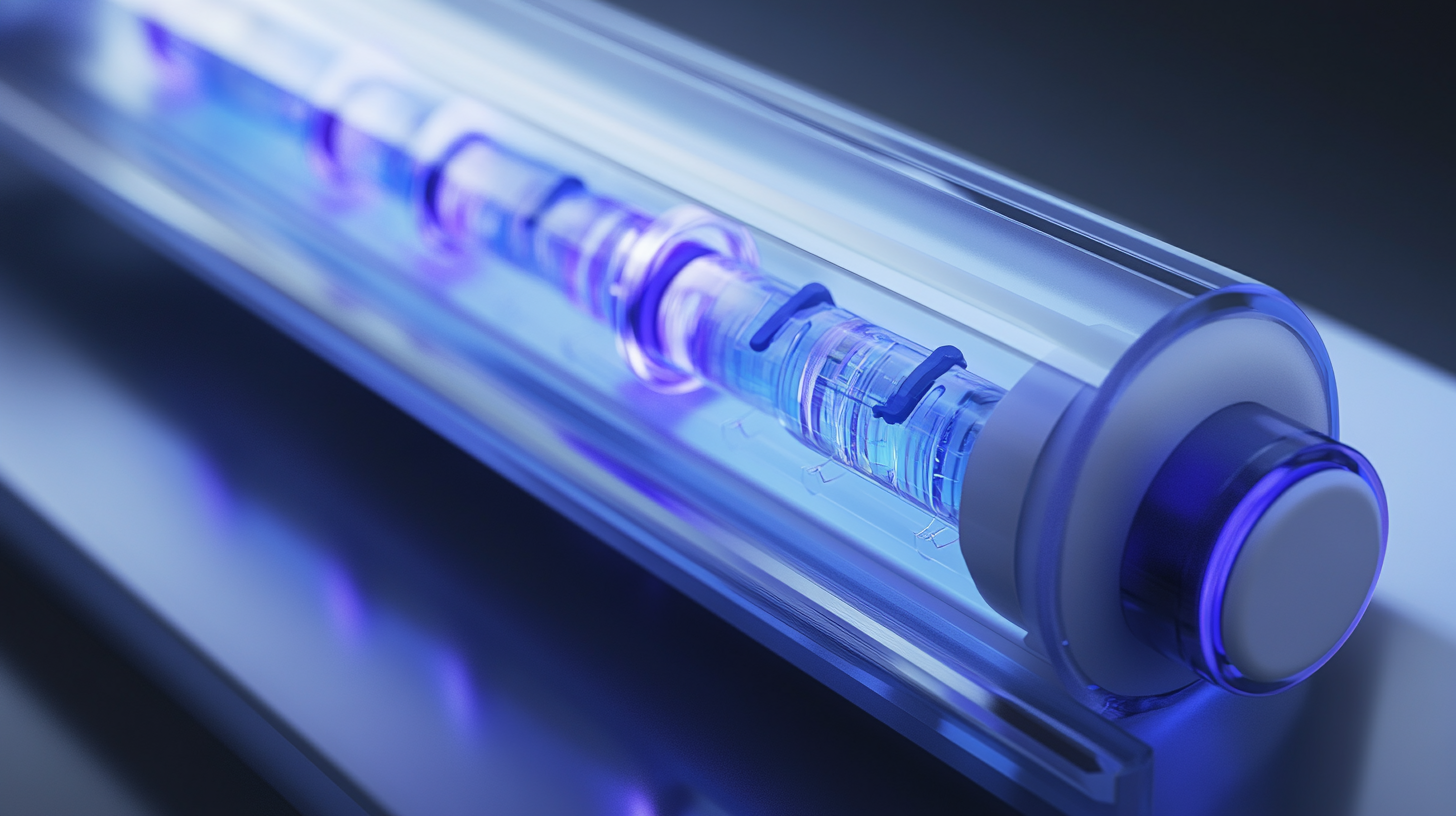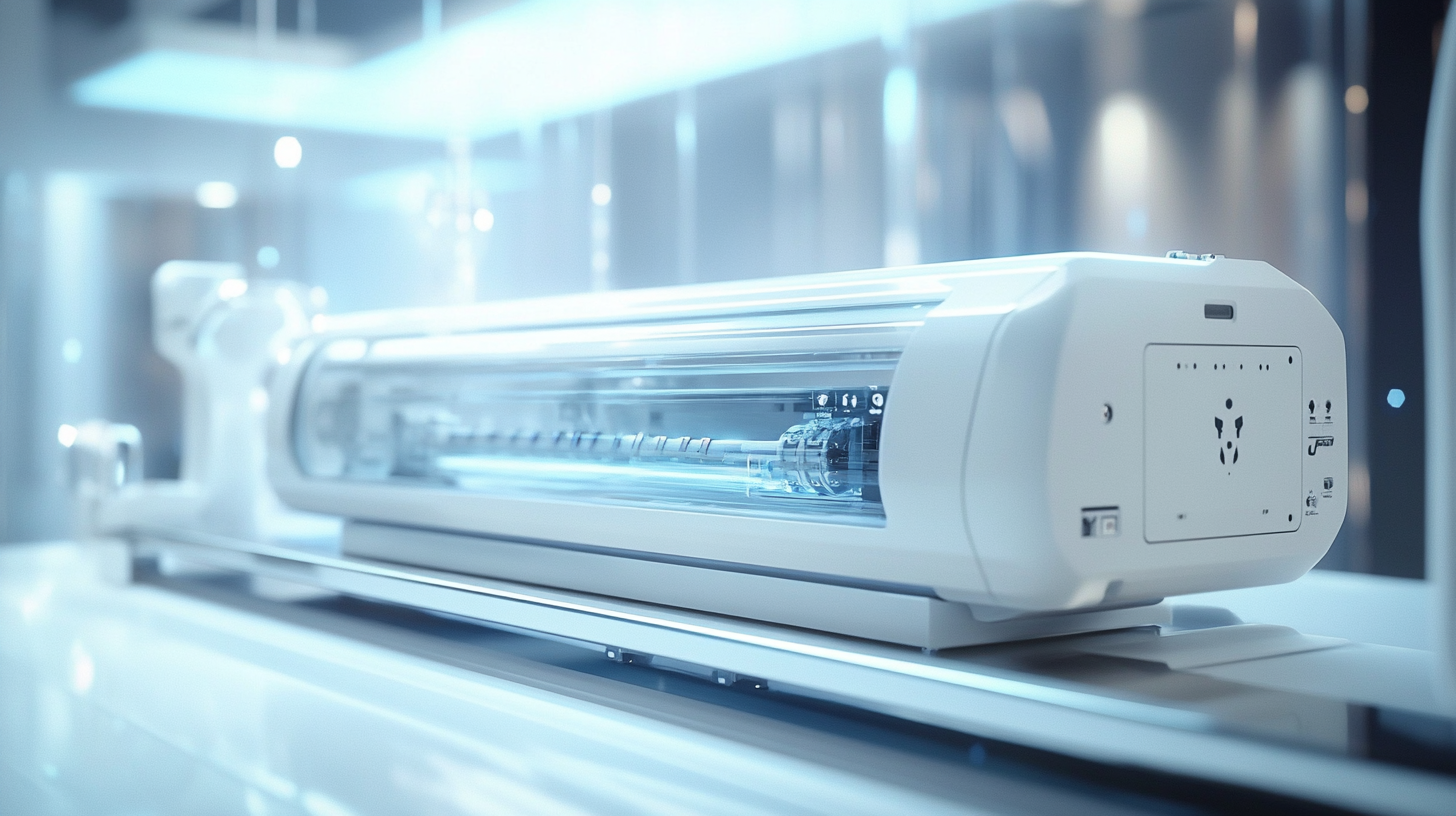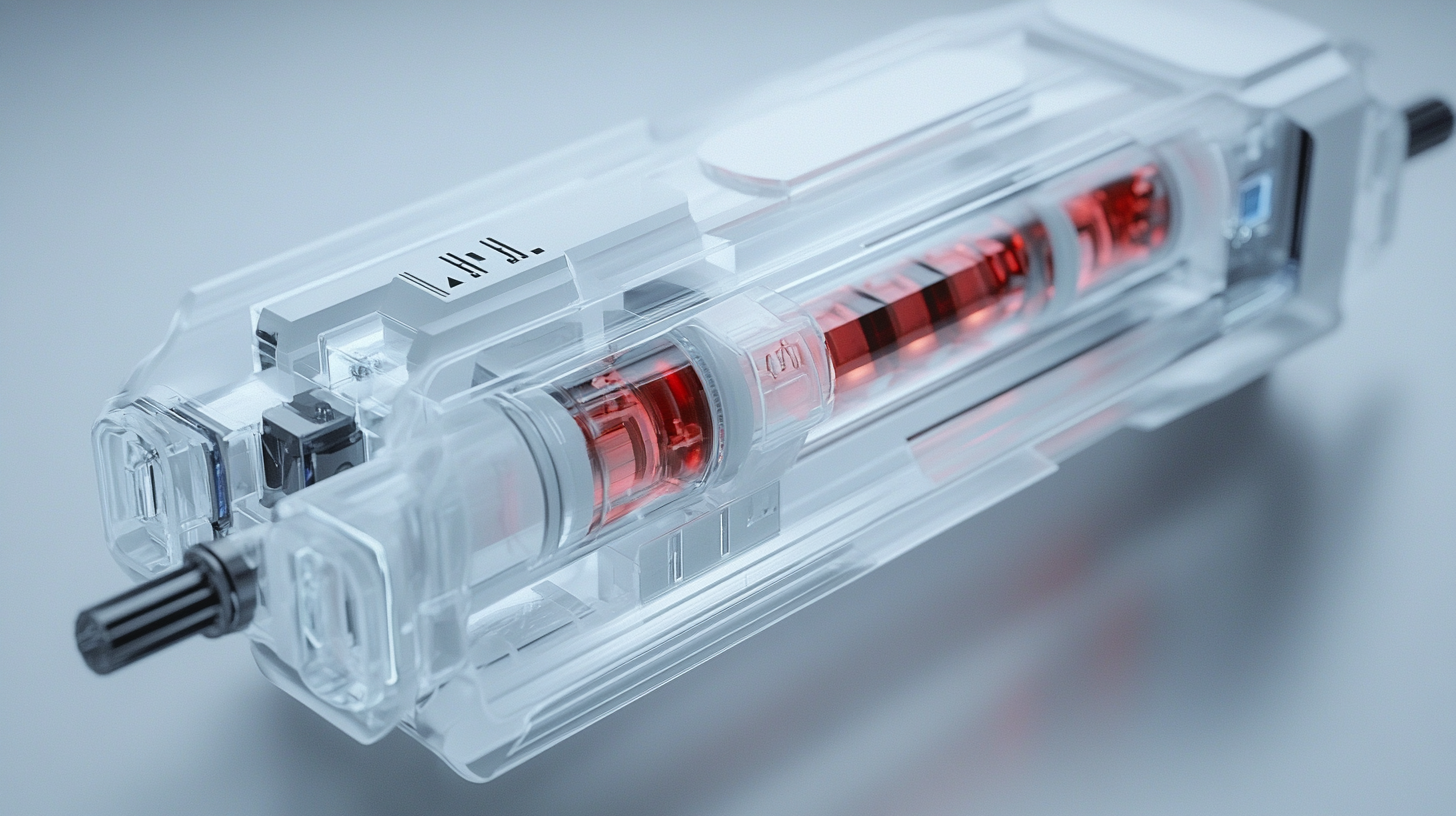Emerging Innovations in Syringe Infusion Pumps for Future Healthcare Solutions
The landscape of healthcare technology is constantly evolving, with syringe infusion pumps emerging as a critical component in delivering precise and controlled doses of medication to patients. According to a report by MarketsandMarkets, the global infusion pumps market is projected to reach USD 14.4 billion by 2026, growing at a CAGR of 5.5% from 2021. This growth is driven not only by the increasing prevalence of chronic diseases but also by the need for advanced technologies that enhance patient safety and improve clinical outcomes. As healthcare providers seek more efficient and reliable solutions, the syringe infusion pump is positioned at the forefront of this innovation wave.
In recent years, significant advancements in syringe infusion pump technology have been made, leading to enhanced functionalities such as smart infusion systems that automatically adjust medication delivery based on real-time patient data. These innovations are crucial as they minimize the risk of medication errors, which, as reported by the Institute of Medicine, affect 1.5 million people annually in the United States alone. With the integration of digital health technologies and interoperability, future developments in syringe infusion pumps promise to transform patient care, making it safer and more efficient. As we delve into the emerging innovations in syringe infusion pumps, it is essential to explore how these advancements will shape the future of healthcare solutions.

Advancements in Syringe Infusion Pump Technology for Enhanced Patient Care
Advancements in syringe infusion pump technology are transforming the landscape of patient care, providing enhanced precision and reliability in medication delivery. The latest innovations in these devices focus on improving the user interface, enabling healthcare professionals to program complex medication regimens with ease. Touchscreen displays, intuitive software, and integrated decision support systems are making it simpler for nurses and physicians to administer therapies tailored to individual patient needs. This not only streamlines workflows but also minimizes the risks of medication errors, ultimately promoting patient safety. Furthermore, the integration of smart technology is paving the way for remote monitoring capabilities. Modern syringe infusion pumps are equipped with wireless connectivity features, allowing healthcare teams to track patient responses and infusion parameters in real-time, regardless of location. This timely data collection facilitates prompt interventions and adjustments, enhancing treatment outcomes. Additionally, these digital advancements enable seamless communication between the infusion pump and electronic health records (EHR), ensuring that data is accurately documented and readily accessible. Moreover, the introduction of advanced materials and compact designs is making syringe infusion pumps more adaptable for various healthcare settings, from hospitals to home care environments. By focusing on portability and ease of use, manufacturers are ensuring that care providers can deliver effective treatment no matter the setting. As these technologies continue to evolve, they hold great promise for improving the overall quality of patient care through innovative and efficient medication management solutions.

Integration of Smart Technologies: Revolutionizing Syringe Infusion Pumps
The integration of smart technologies into syringe infusion pumps is poised to revolutionize healthcare delivery by enhancing precision and safety in medication administration. Modern infusion pumps, recognized for their advanced programmability and interconnectivity, have become essential in clinical settings. According to recent industry reports, the infusion pump market is projected to reach USD 11.3 billion by 2027, driven by the increasing demand for improved patient care and the need for efficient drug delivery systems.
Smart infusion pumps now leverage connectivity to the Internet of Things (IoT), transforming traditional methods of medication delivery. This connectivity allows real-time communication of medical information to cloud-based systems, enabling healthcare providers to collect, store, and analyze extensive patient data. This demographic shift toward data-driven care not only enhances patient safety by minimizing human error but also optimizes treatment outcomes through better monitoring and feedback mechanisms.
Furthermore, the latest advancements include features such as machine learning algorithms that can predict patient responses and automated alerts for any potential discrepancies in medication administration. These innovations are reshaping the landscape of IV therapy, making it increasingly adaptable to a variety of clinical needs and ensuring that healthcare professionals have access to critical information at their fingertips. As the healthcare sector continues to evolve, the role of smart syringe infusion pumps will become ever more crucial in delivering safe, effective, and customized care to patients.

User-Centric Design: Improving Usability and Safety in Healthcare Settings
In recent years, the healthcare sector has witnessed a transformative shift towards user-centric designs, particularly in the development of syringe infusion pumps. According to a report by Research and Markets, the global infusion pump market is projected to reach USD 14 billion by 2025, emphasizing a critical need for innovative design that prioritizes usability and safety. Traditional infusion pumps often present users with a steep learning curve, leading to medication errors and increased patient risk. To address these issues, manufacturers are now focusing on creating intuitive interfaces and ergonomic designs that cater specifically to healthcare professionals’ needs.
User-centric design not only improves usability but also enhances the overall safety of drug administration in clinical settings. A study published in the Journal of Patient Safety indicates that nearly 20% of medication errors in hospitals are attributed to equipment-related issues. By integrating user feedback during the design process, companies can develop features like color-coded systems, touchscreens, and customizable alerts, which streamline the infusion process and reduce the cognitive load on healthcare providers. This not only leads to more effective and error-free medication delivery but also fosters a safer environment for patients.
Moreover, the integration of advanced technologies such as machine learning and real-time monitoring within infusion pump systems can elevate the level of care provided. These innovations enable healthcare teams to respond swiftly to any irregularities in infusion rates or patient conditions, thereby significantly minimizing potential risks. As the landscape of healthcare continues to evolve, prioritizing user-centric design in medical devices like syringe infusion pumps will be critical in shaping a safer and more efficient healthcare future.

Telemedicine and Syringe Infusion Pumps: A Synergistic Future
The integration of telemedicine and syringe infusion pumps is reshaping the landscape of healthcare delivery, particularly in chronic disease management and remote patient monitoring. Data from the Global Telemedicine Market Report suggests that the telemedicine sector is expected to surpass $459.8 billion by 2030, driven by advancements in digital health technologies. This growth reflects an increasing demand for more accessible and efficient healthcare solutions, where syringe infusion pumps play a pivotal role.
Syringe infusion pumps, known for their precision in delivering medication, are now becoming integral to telemedicine applications. These devices allow healthcare providers to remotely monitor medication administration, enhancing patient safety and adherence to treatment protocols. A report by Research and Markets notes that the global infusion pump market is projected to reach $16.4 billion by 2026, indicating a robust interest in innovative infusion solutions that can be paired with telehealth services. The synergy between telemedicine and infusion pumps enables real-time data transmission, allowing healthcare professionals to make prompt adjustments to treatment plans based on live patient data.
Moreover, the COVID-19 pandemic accelerated the adoption of telehealth services, with a McKinsey report indicating that telehealth usage has stabilized at levels 38 times higher than pre-pandemic rates. This shift underscores the necessity for sophisticated infusion systems that can function seamlessly in virtual care environments. As the technology evolves, we can anticipate enhanced features in syringe infusion pumps, such as mobile app connectivity and artificial intelligence-driven dosage adjustments, which will further streamline patient management in a telemedicine context.
Regulatory Challenges and Innovations Shaping Syringe Infusion Pumps
The field of syringe infusion pumps is rapidly evolving, driven by technological advancements and the need for enhanced patient care. As healthcare professionals strive to ensure accurate drug delivery, regulatory bodies face the challenge of keeping pace with these innovations. The stringent regulations governing medical devices require manufacturers to demonstrate safety and efficacy, which can sometimes stifle innovation. However, collaboration between regulators and industry stakeholders is essential to create frameworks that not only ensure patient safety but also encourage the development of cutting-edge technologies.
Recent innovations in syringe infusion pumps have included features such as wireless connectivity, smart algorithms, and patient-specific dosing capabilities. These advancements aim to minimize human error and improve clinical outcomes. However, these technologies introduce new regulatory questions, such as data security and integration with other electronic health records. Regulators must adapt to these evolving technologies by establishing guidelines that can accommodate innovation while protecting patients, ensuring that these new devices can swiftly enter the market without compromising safety.
Moreover, as telemedicine and remote patient monitoring become more prevalent, the role of syringe infusion pumps is expanding. The integration of these pumps with telehealth solutions presents a unique regulatory challenge, as it requires harmonization of standards across different platforms. By addressing these challenges head-on, the regulatory landscape can foster an environment conducive to innovation, ultimately leading to more efficient and effective healthcare solutions that can better serve patients' needs in an increasingly complex medical landscape.


